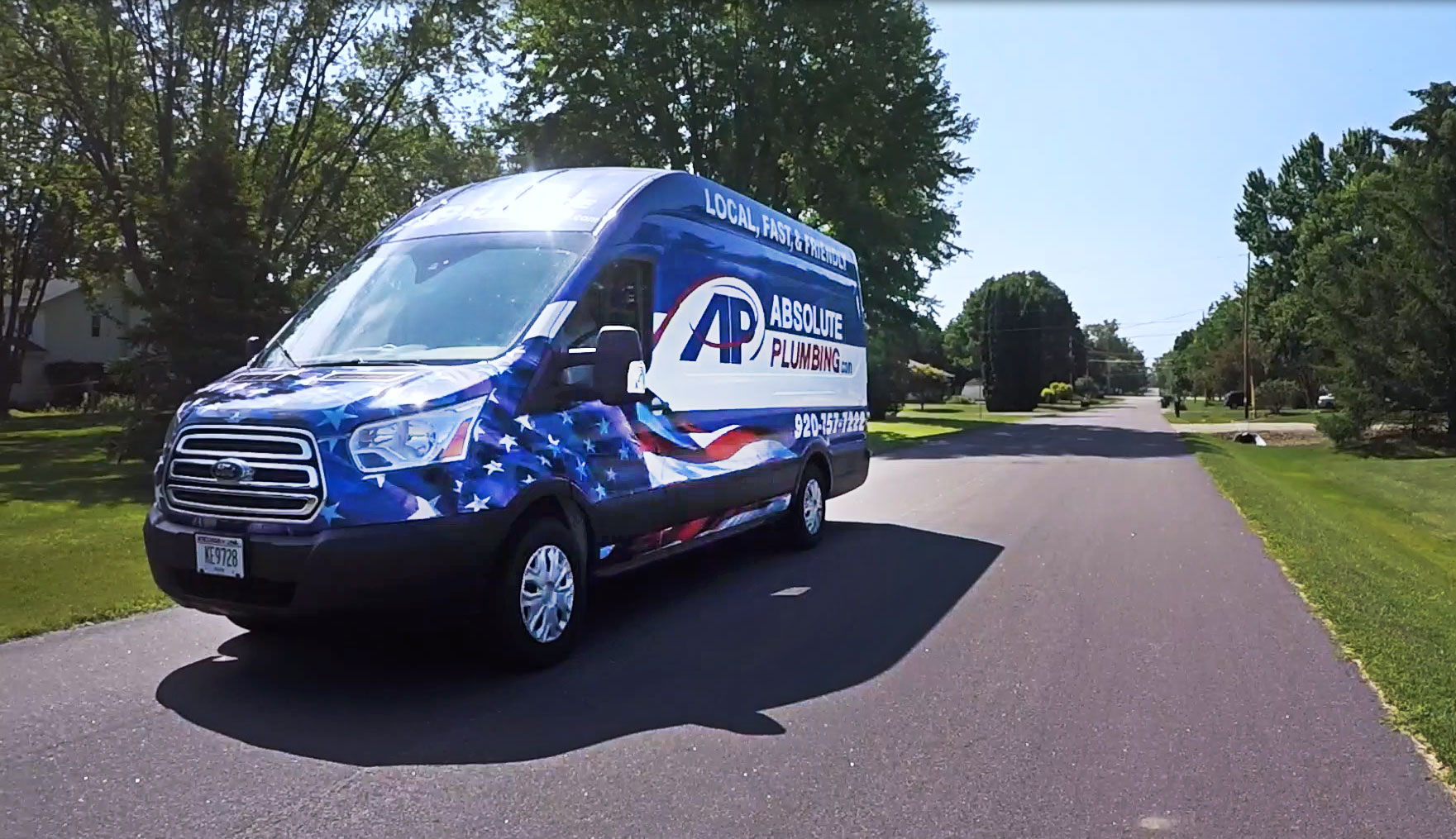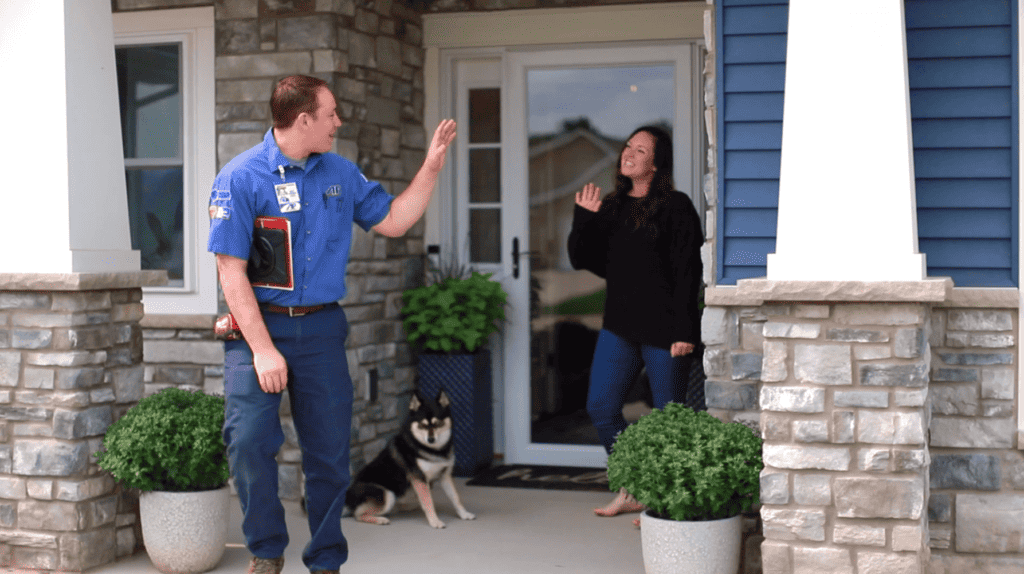
Drain Cleaning

Slow Drains?
Is your shower or sink starting to hold water a few seconds longer each time you use it? Maybe there’s an unpleasant smell starting to come from the drain and you can’t fix it yourself? We have the latest plumbing equipment to help you get out of your stinky situation.
Absolute Plumbing is a full-service, residential plumbing company. We work with homeowners in the Appleton & Neenah area. Whether you need new plumbing installed or you have a problem with your existing plumbing, give us a call today! No matter how big or small the problem, we are skilled at handling all types of plumbing issues, including water heaters, water softeners and filters, and pipes and sewer drains.

What Drains do I have in my Home?
There are many names and terms that are used for the drainage in your home.
Main line/Sewer Lateral
In a basement, or in a crawlspace for those without basements, the main line is the largest drainpipe in the house. It runs from your home, under the front yard to the city main line. The line carries all sewage out to the city sewer main line under your street. The waste is then transported to the city’s waste treatment plant. If it ends up in your house, then our expert plumbers are here to help! The main line can be made from various materials and more than one type may be used together.
Here are a few: ABS, PVC, Transite or Asbestos Pipe, Concrete, Orangeburg, Cast Iron, Galvanized
Secondary Drain/Branch Line
This term is used by plumbers to refer to any other line that is not part of the main sewer line. This would include your kitchen drain, floor drain, laundry drain, bathroom sink drain, and your tub or shower drain. These lines will tie into the main line of your home or business.
These pipes are usually one of these types of materials: ABS, PVC, Galvanized, Cast Iron, Lead

What Equipment Do We Use?
Sewer Camera
A camera made to go down 3-4” main drains, as well as some 2” drains. These cameras can show us and you the status of the line, blockages, bellies, breaks, roots, and a lot of other things that can cause problems in the main line. These cameras allow us to see and record what we inspect. You’ll have the ability to see and have documentation of problems, as well as the outcomes of our services.
Main line Auger (you might call it a “snake”)
We call this the “big auger”. It is a machine with a 5/8-3/4″ cable that spins at high speeds with cutter attachments on the head to penetrate the blockage and get the line flowing. As with all augers, this machine will remove some, but not all, roots and does not clear sludge off the walls of the pipe.
Secondary Auger
We call this our “medium auger”. It is used to clear drains 1½-2″ in diameter which are your secondary drains.
P-trap Auger
This is our “small auger”. It can go through the p-trap of your sink or shower. (The p-trap is that goose neck thing under your sink.)
Flex Shaft
This is a newer tool in our arsenal and is very powerful. This machine uses a chain with carbide tips to cut roots and to descale pipe or even to remove grease build up. This tool can have a camera in the line at the same time so we can pinpoint roots and remove them.
Jetter
A sewer jetter, also known as a “hydro-jetter” or “water jetter”, is a powerful drain cleaning machine that use high-pressure water jets to clear obstructions in residential and commercial drainpipes. It’s like pressure washing the pipes so they are almost like new. Jetters are great for main lines, kitchen drains, and laundry drains especially. These lines build up a lot of grease and sludge over time which ‘catches’ other material and blocks the line. A hydro-jetter blasts all this sludge away, clears the sludge, and allows the pipes to flow smoothly.
Give us a call at (920) 757-7222 we will get you scheduled!
We care about you and want to help assist you in all your plumbing needs.
What are the Common Drain Problems?
The most typical calls we get for a drain are due to a plugged drain, sewer flood, an overflow, or a backed-up drain. Sometimes these drain issues are simple blockages, but in some cases can, or are causing real damage.
When you call Absolute Plumbing our customer care representative will ask you a series of questions to better understand the type of back up you are having. This is so we can better prepare your plumber for your problem, determine the level of emergency, and ensure we have all the equipment necessary.
These questions will let us know if it is a main line problem or a secondary drain backup. Though these phone questions are important, we will not be able to fully diagnose your problem over the phone, but it will give us a start. An in-home drain inspection or diagnostic will be needed to give clear direction.
This evaluation will allow us to better serve you and to get to know your home better. Once we can determine the problem, we can then start building options for you. Every home and problem are different, not every drain takes the same amount of time or equipment. Often plumbers will entice a customer with very low drain fee, with criteria that most drain cleanings won’t meet. Often the customer is surprised by the proposal given. At Absolute Plumbing, we don’t believe this is a good way to start off a long-term relationship. It will usually lead to unrealistic expectations of what you get for that price and a bad break up. We come to your home ready to work, diagnose the problem, present transparent pricing from our Straight-Forward Pricing Guide, and as you choose, we fix it – guaranteed.
How Can We Take Care of Your Drain Problem?
Let’s start with a main line back up and visual inspection with the use of a sewer camera. In order to access this line, we will need to enter through a cleanout in the yard in the home (typically located in the wall) or by pulling a toilet. Then we will use a special camera to follow the line down, showing us the line condition, blockages, roots, offsets, bellies, other abnormalities, or even if the line is in proper shape.
We have great plumbers with great tools; We will fix it.
Sometimes, the conditions are such that water has filled the line. Unfortunately, you cannot see anything reliably under water and determining an issue in the dark is almost impossible. Try watching a movie blind folded and with no sound. You will get as much information about that movie as you would with a camera that can’t see underwater. We will then have to clear the line and get it flowing again first. Then, at that point, a visual camera inspection can be done.
There are some circumstances where the line cannot be cleared and the experience of our plumbers can make a good assessment without a visual inspection. Then, the camera may be put down the line to locate the area where the camera stops. Cool right? That is because our special cameras send a signal to a hand-held locator telling it where it is located underground.